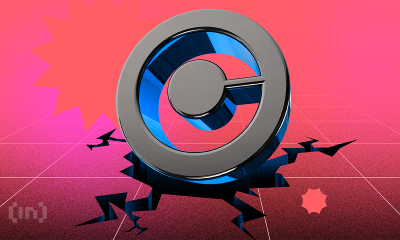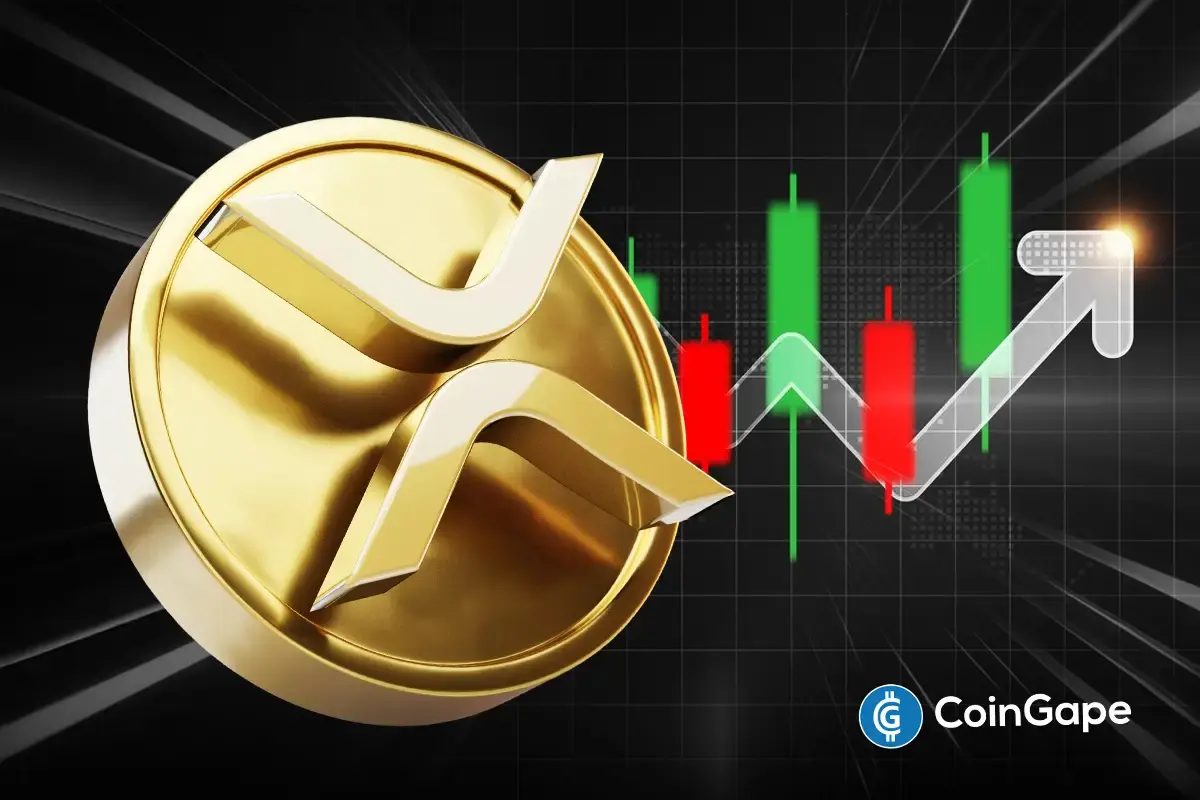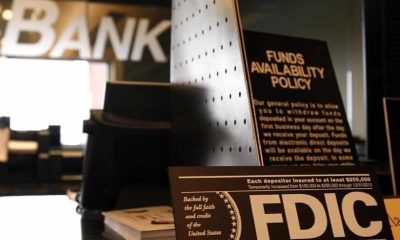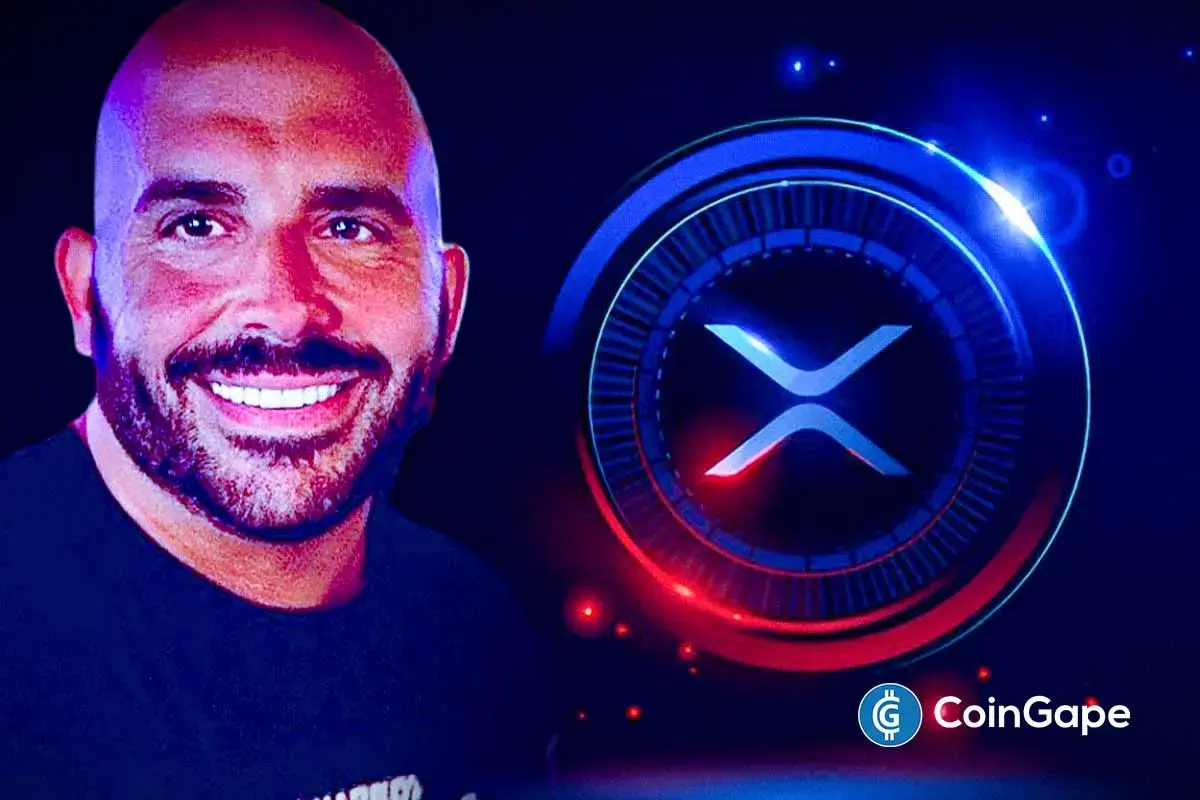Market
Ripple CTO Exposes FDIC Insurance Gaps, Cites Coinbase


Ripple’s Chief Technology Officer David Schwartz has been deeply involved in the online debate surrounding the Federal Deposit Insurance Corporation (FDIC). While he did not attack Coinbase, he did not defend it either.
The safety of crypto holdings in centralized exchanges remains a concern after the collapse of FTX in 2022. The incident opened investors’ eyes to the risks of storing crypto on exchanges versus cold storage.
Coinbase and FDIC Insurance: Ripple CTO’s Critical Analysis
The Ripple CTO detailed some dangers of storing crypto on centralized exchanges. A commercial litigator noted that depositing money into an exchange renders the depositor an unsecured creditor to the exchange. They have “little to no rights if the exchange goes bankrupt” and are the last in line for compensation.
Coinbase came into the discussion as participants probed the implication of FDIC insurance on exchanges. According to Schwartz, the FDIC insurance would only protect the customer if the exchange’s partner bank fails, not the exchange itself. If Coinbase fails and the bank does not have sufficient funds to cover everyone, you may lose out.
“If Coinbase fails and there’s not enough money in the bank, you still lose. This recently happened with Synapse,” Schwarz explained.
Read more: 2023 US Banking Crisis Explained: Causes, Impact, and Solutions
Schwartz asserted that he has no reason to think storing crypto on Coinbase is unsafe. Nevertheless, the Ripple executive acknowledged risks associated with centralized exchanges storage, noting, “If they screw up enough, your funds will be lost.”
When the question of Coinbase using FDIC-insured banks to hold users’ deposits separately came up, Schwartz agreed that it was potent. However, he stressed that the exchange would need to have records to determine who the funds belong to.
It, therefore, suggests that while platforms such as Coinbase, among other reputable exchanges, offer convenience, risks are still involved.
FDIC Could Bring New Hope for Bank-Crypto Interactions
Nevertheless, this situation may soon change. The recent nomination of Christy Goldsmith Romero as the new FDIC chair sparked speculation that she could allow banks to independently decide on serving digital asset companies. This follows her response to Senator Cynthia Lummis’ question about traditional financial institutions serving cryptocurrency-related companies.
“I don’t think it’s the FDIC’s role to tell banks what industries or companies they should be providing services to,” Romero stated.
If TradFi can independently decide whether to serve crypto industry players, it could deliver better interactions between banks and digital asset service providers. Coinbase Chief Policy Officer Faryar Shirzad echoed Romero’s statement, citing Operation Chokepoint 2.0’s impact on the crypto sector.
“The bank regulators right now claim – as the nominee suggests here – that there is no targeted debanking of the sector, and that banks are currently free to bank crypto companies subject to normal internal risk management reviews,” Shirzad stated.
Nevertheless, it would also mean a paradigm shift. This is considering a recent decision between the FDIC, the Federal Reserve, and the Office of the Comptroller of Currency. Dissecting the risks of crypto-assets to banking organizations, the three agreed business models focusing on crypto activities are a concern to the banking sector.
Read more: How Does Regulation Impact Crypto Marketing? A Complete Guide
This stance has caused strife between banks and the crypto industry. In turn, Coinbase filed a lawsuit against the FDIC and the US Securities and Exchange Commission (SEC).
These developments highlight the industry’s frustrations as traders, investors, and institutions walk the thin line separating traditional finance and crypto.
Disclaimer
In adherence to the Trust Project guidelines, BeInCrypto is committed to unbiased, transparent reporting. This news article aims to provide accurate, timely information. However, readers are advised to verify facts independently and consult with a professional before making any decisions based on this content. Please note that our Terms and Conditions, Privacy Policy, and Disclaimers have been updated.
Market
10 Altcoins at Risk of Binance Delisting
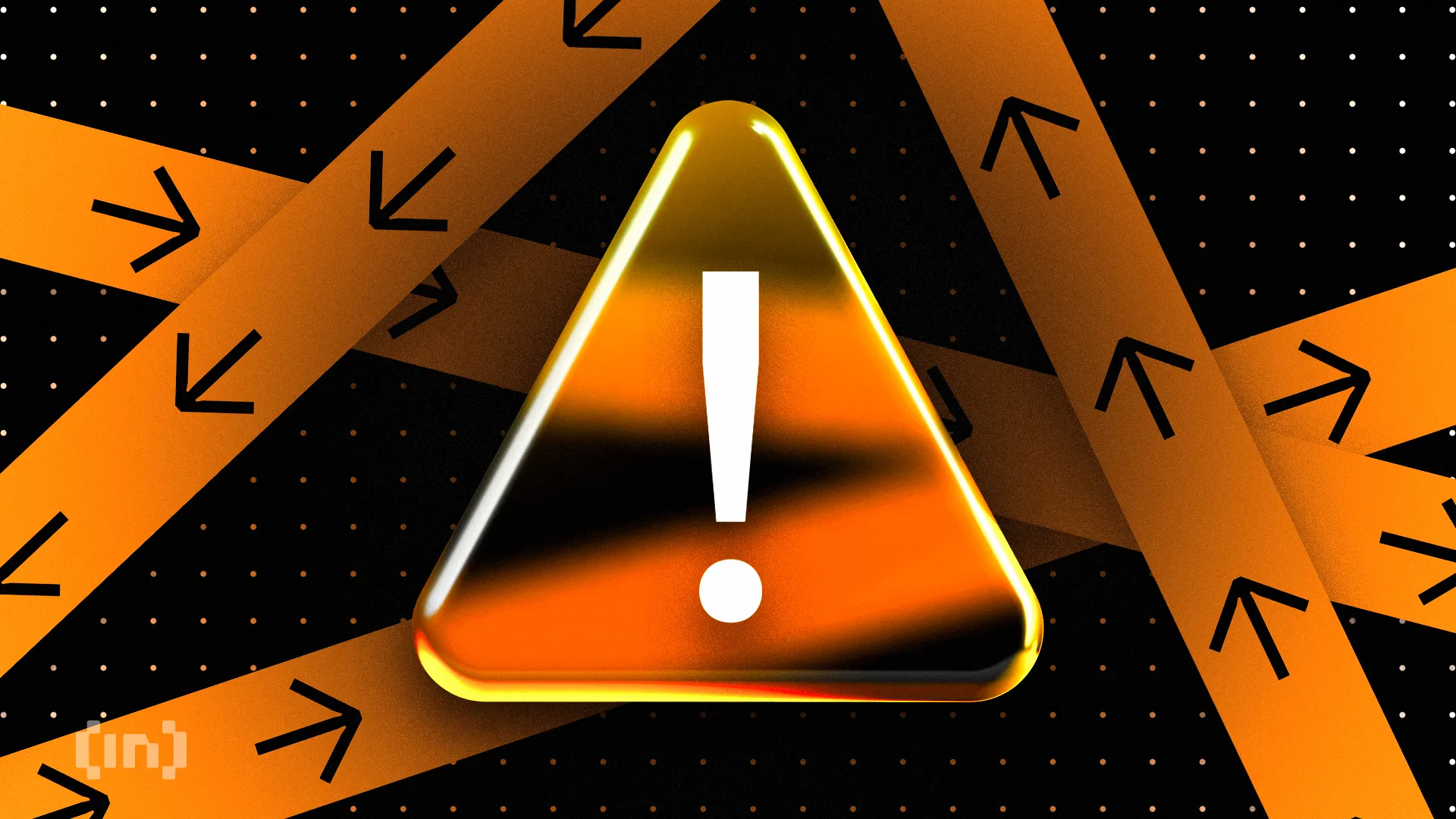
On April 3, Binance announced that it would add a new set of tokens to its monitoring list. These tokens are under closer scrutiny and may face delisting following the upcoming review period.
This move follows the exchange’s aims to increase transparency while offering more clarity regarding the risk levels associated with different cryptocurrencies.
10 Altcoins in Danger of Binance Delisting
As part of this update, the following tokens will be added to the Monitoring Tag list: Ardor (ARDR), Biswap (BSW), Flamingo (FLM), LTO Network (LTO), NKN (NKN), PlayDapp (PDA), Perpetual Protocol (PERP), Viberate (VIB), Voxies (VOXEL) and Wing Finance (WING).
Tokens added to the Monitoring Tag exhibit notably higher volatility and risk compared to other listed tokens. Binance will closely monitor these tokens, with regular reviews to assess their compliance with the platform’s listing criteria.
“Tokens with the Monitoring Tag are at risk of no longer meeting our listing criteria and being delisted from the platform,” Binance said.
Following the announcement, the prices of the mentioned altcoins plummeted by double-digits.
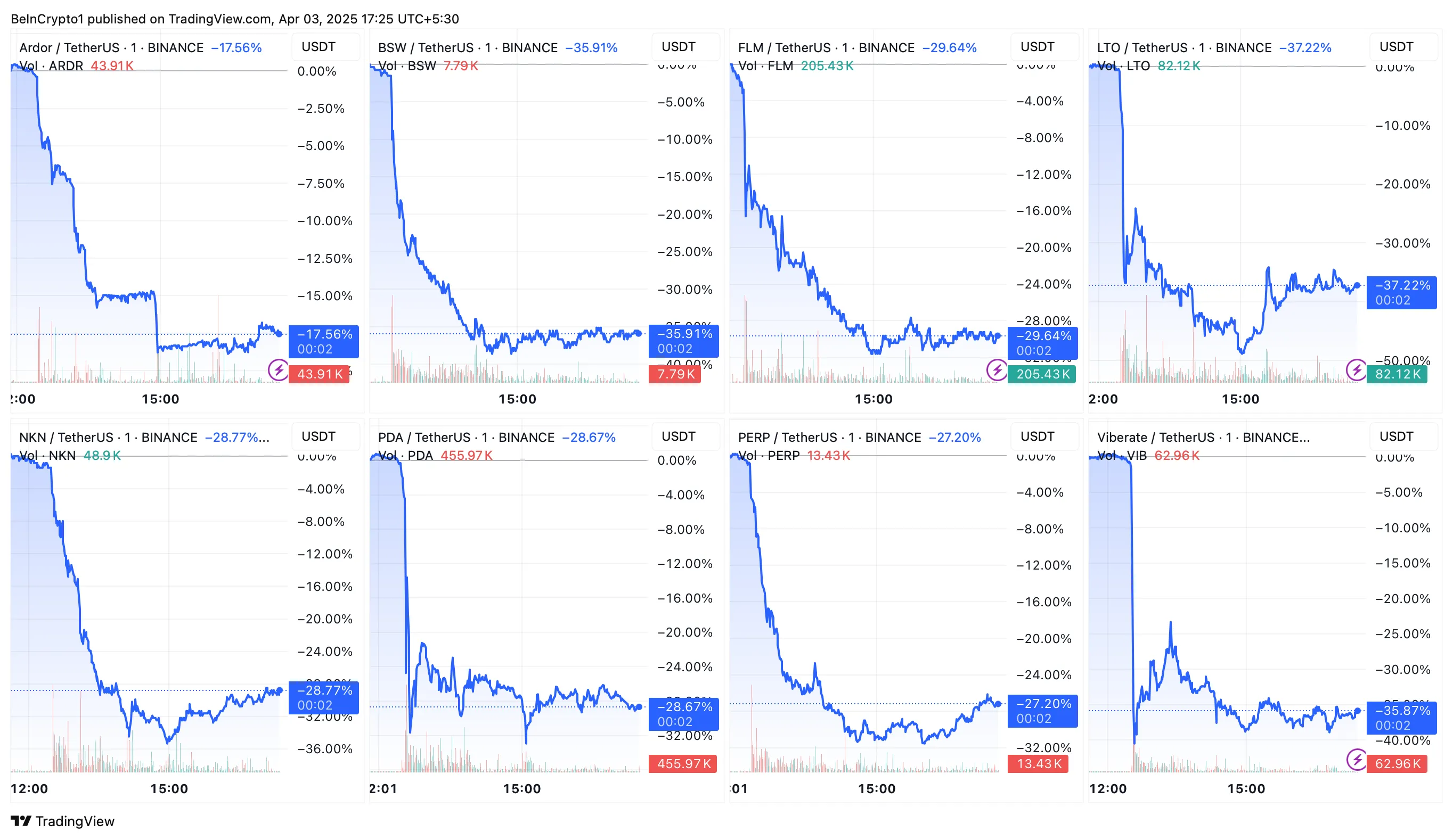
In addition to the new Monitoring Tag additions, Binance will also remove the Seed Tag from Jupiter (JUP), Starknet (STRK), and Toncoin (TON).
Tokens marked with the Seed Tag are those that are still in their early stages of development and have not yet met Binance’s full listing criteria. The removal of the Seed Tag indicates a change in the status of these projects. This suggests that they no longer fit the initial criteria for such a label.
Tokens with the Monitoring Tag or Seed Tag come with inherent risks. Binance ensures that users are well-informed before trading them. To access trading for these tokens, users must pass a risk awareness quiz every 90 days.
The quiz makes sure that users understand the potential risks associated with trading higher-risk tokens. Binance will also display a risk warning banner for these tokens on its Spot and Margin platforms.
Binance will continue to conduct periodic reviews of tokens with the Monitoring Tag and Seed Tag. During these reviews, several factors are taken into account. This includes the project team’s commitment, development activity, token liquidity, and community engagement.
The latest development follows a similar announcement from Binance in March. The exchange routinely delists tokens that fail to keep up with its criteria.
Disclaimer
In adherence to the Trust Project guidelines, BeInCrypto is committed to unbiased, transparent reporting. This news article aims to provide accurate, timely information. However, readers are advised to verify facts independently and consult with a professional before making any decisions based on this content. Please note that our Terms and Conditions, Privacy Policy, and Disclaimers have been updated.
Market
HBAR Foundation Eyes TikTok, Price Rally To $0.20 Possible
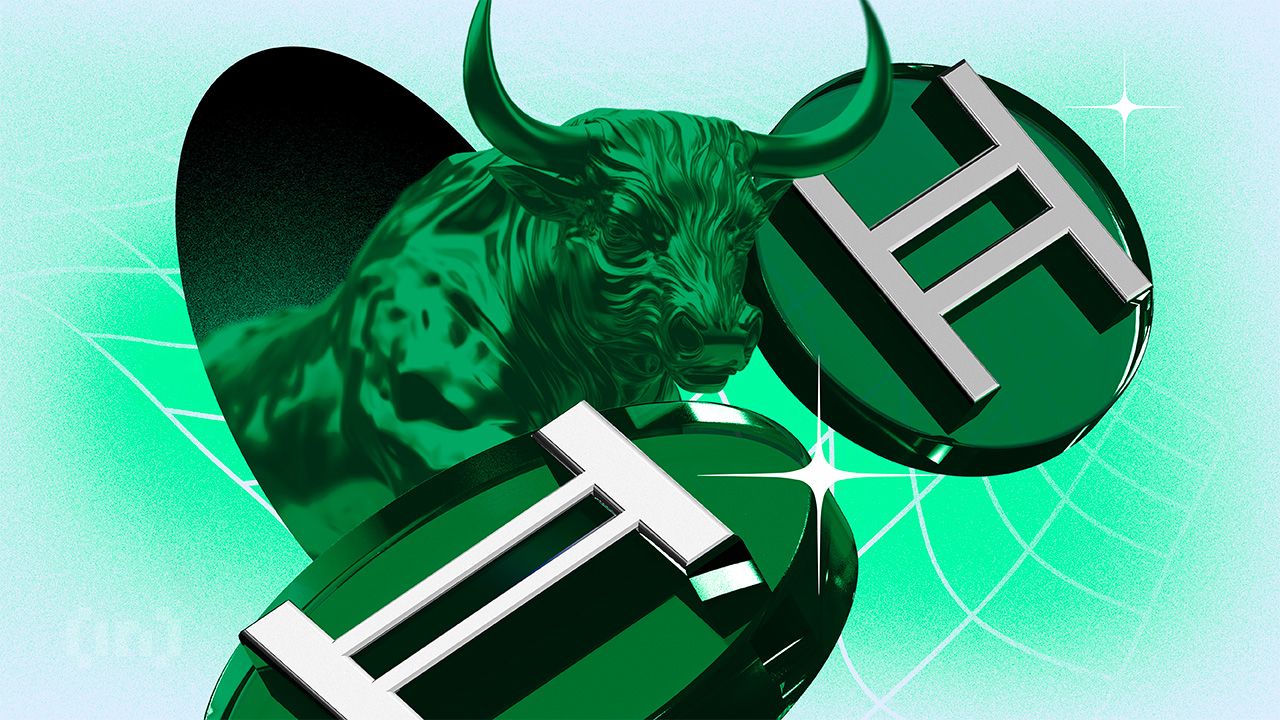
Hedera (HBAR) has faced a downtrend recently, with the crypto asset’s price failing to maintain support at $0.200. This failure to establish a solid base has led to a pullback.
However, key developments within the Hedera ecosystem and shifting investor sentiment could spark a potential price rally in the coming days.
HBAR Foundation Eyes TikTok
After nearly a month of bearish sentiment, investors are beginning to shift their stance towards bullishness. The Hedera Foundation’s recent move to team up with Zoopto for a late-stage bid to acquire TikTok has played a pivotal role in this shift. If the acquisition is approved, the partnership could expose HBAR to a massive audience due to TikTok’s extensive user base, potentially driving up demand and mainstream adoption.
The prospect of this collaboration has reignited interest among investors, sparking optimism about Hedera’s future growth potential. With TikTok’s wide-reaching influence, the strategic partnership could offer Hedera an edge in the competitive crypto market, encouraging further accumulation of HBAR tokens.
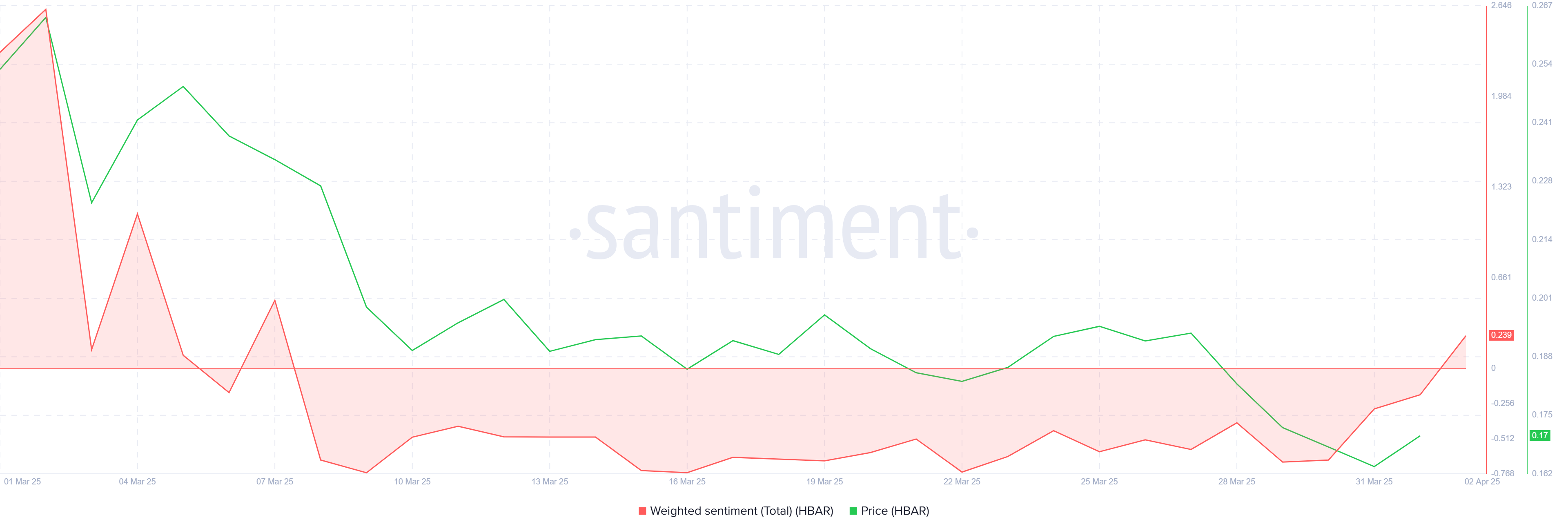
On the technical front, the Chaikin Money Flow (CMF) indicator is showing signs of recovery. The CMF has started to tick upwards, signaling a potential increase in inflows. While it hasn’t yet crossed above the zero line, the growing positive momentum indicates that more capital could be entering the market. Continued inflows could provide the necessary push for HBAR to break through key resistance levels.
The increase in capital flow suggests a strengthening of investor confidence. However, for a sustained rally, more substantial buying pressure will be required to move HBAR above its current price point. If this trend continues, HBAR may see a rise in both investor interest and market value in the near future.
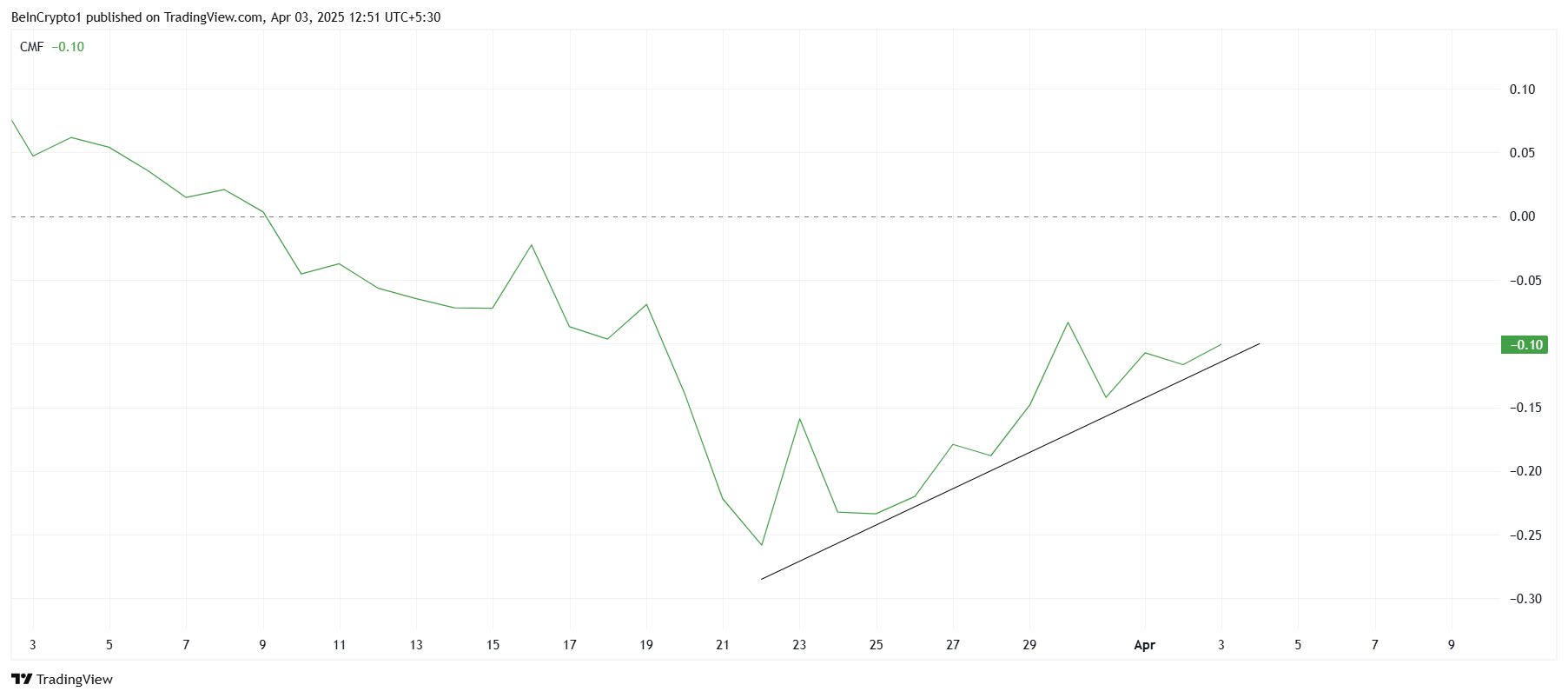
HBAR Price Finds Support
Currently, HBAR is priced at $0.161, just under the key resistance level of $0.165. The next significant resistance lies at $0.197, which has acted as a barrier to HBAR’s price recovery. With a 22% gap between the current price and this resistance, overcoming this hurdle could pave the way for a move toward $0.200.
Given the positive developments surrounding Hedera, it is plausible that HBAR could move toward these resistance levels. If the token can breach $0.165 and then $0.177, the path to $0.197 becomes much clearer. This would mark a critical point for HBAR as it seeks to regain lost ground.
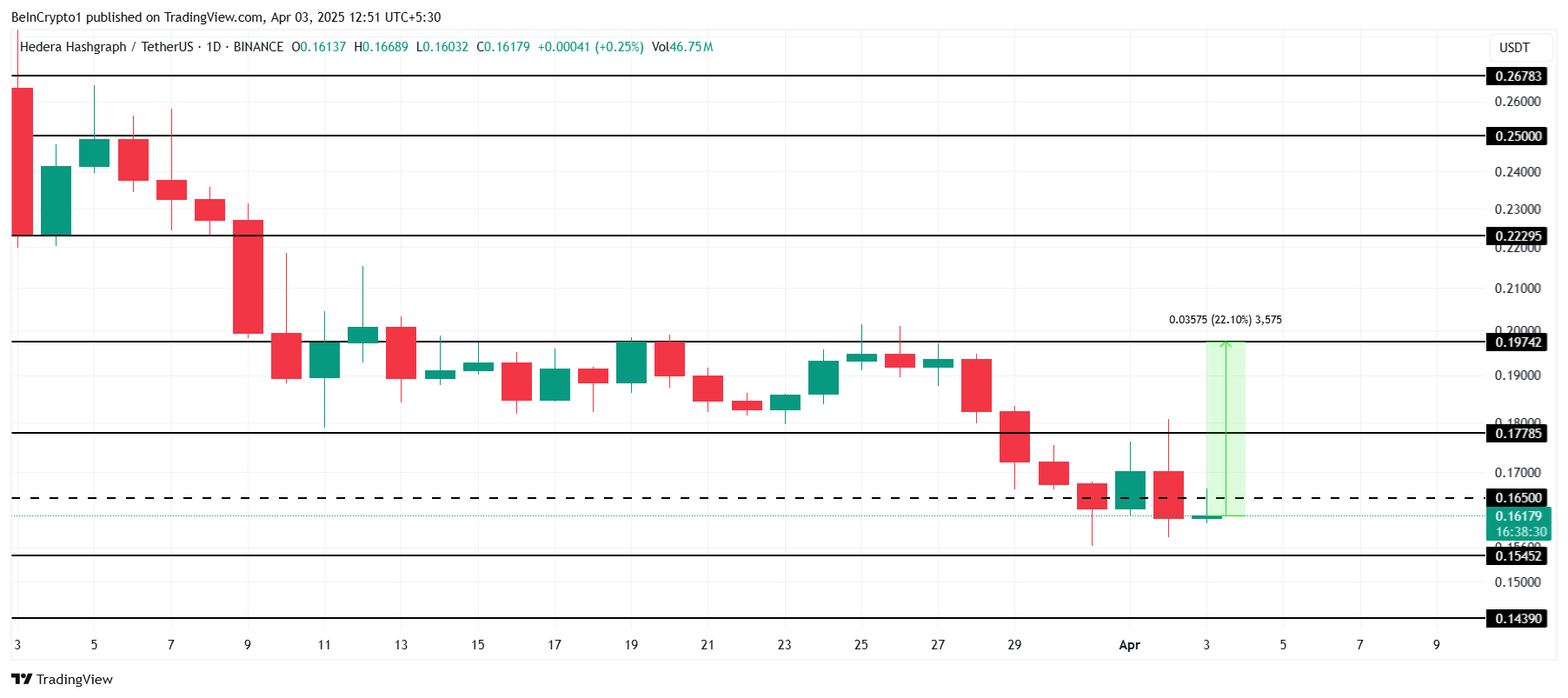
However, if investors decide to take profits and sell before further upward movement, HBAR could fail to breach the $0.177 resistance. Such a scenario could push the price back down towards $0.154 or $0.143, invalidating the bullish outlook and prolonging the consolidation phase.
Disclaimer
In line with the Trust Project guidelines, this price analysis article is for informational purposes only and should not be considered financial or investment advice. BeInCrypto is committed to accurate, unbiased reporting, but market conditions are subject to change without notice. Always conduct your own research and consult with a professional before making any financial decisions. Please note that our Terms and Conditions, Privacy Policy, and Disclaimers have been updated.
Market
IP Token Price Surges, but Weak Demand Hints at Reversal

Story’s IP is today’s top-performing asset. Its price has surged 5% to trade at $$4.37 at press time, defying the broader market’s lackluster performance.
However, despite the price uptick, the weakening demand for the altcoin raises concerns about its rally’s sustainability.
IP Price Rises, But Falling Volume Signals Weak Buying Momentum
IP’s daily trading volume has plummeted by 7% over the past 24 hours despite the token’s price surge. This forms a negative divergence that hints at the likelihood of a price correction.
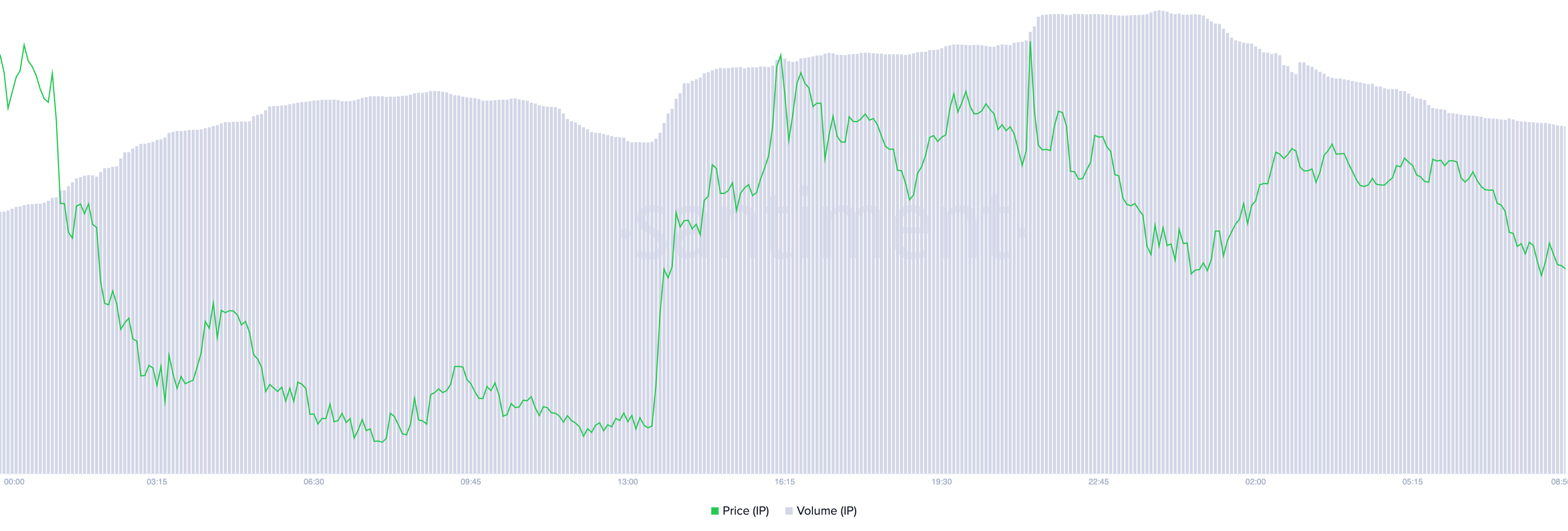
A negative divergence emerges when an asset’s price rises while trading volume falls. It suggests weak buying momentum and a lack of strong market participation.
This indicates that the IP rally may not be sustainable, as fewer traders are backing its upward move. Without sufficient volume to reinforce the price increase, the altcoin is at risk of a potential reversal or correction.
Further, IP’s Moving Average Convergence Divergence (MACD) setup supports this bearish outlook. As of this writing, the token’s MACD line (blue) rests below its signal line (orange), reflecting the selling pressure among IP spot market participants.
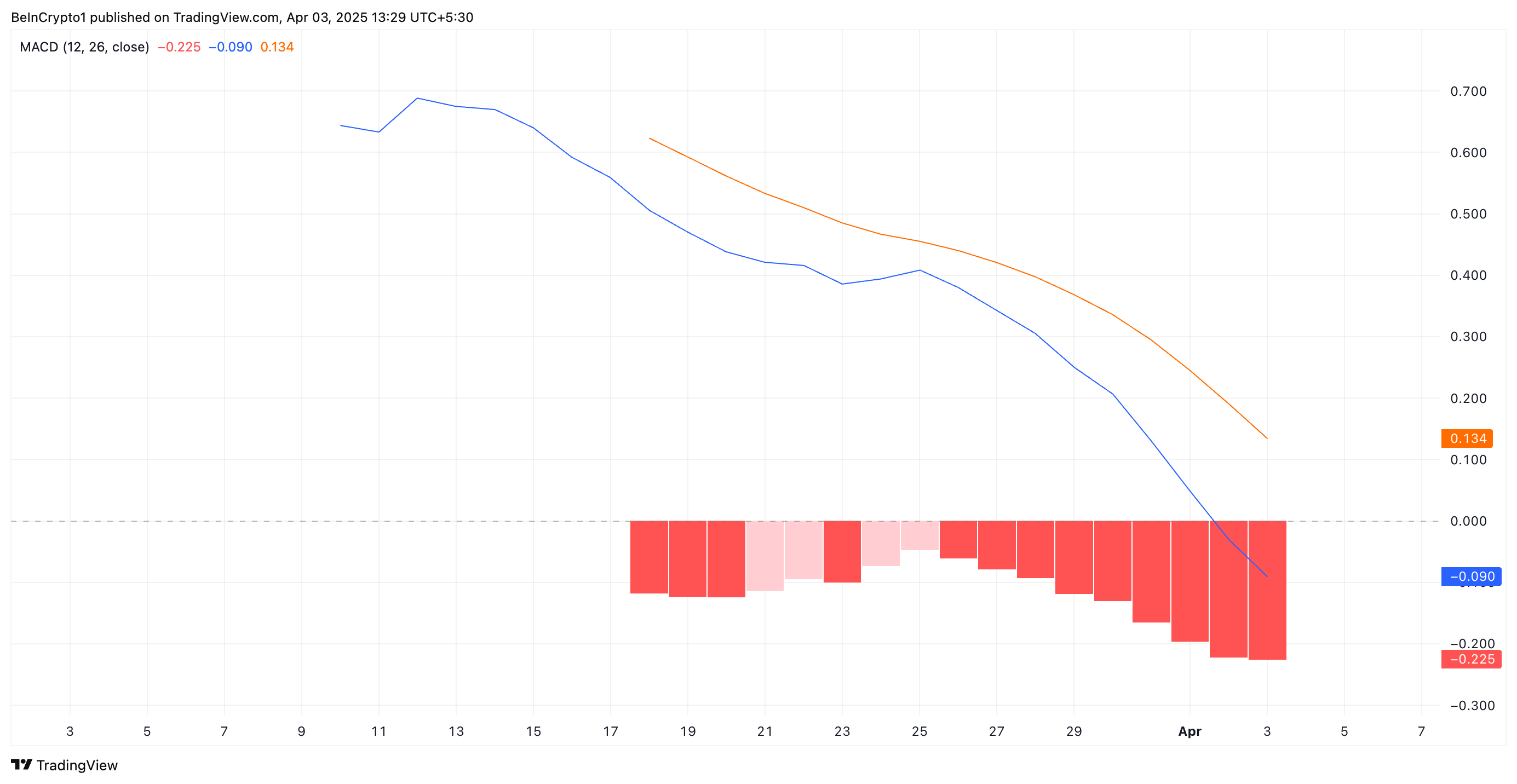
The MACD indicator measures an asset’s trend direction and momentum by comparing two moving averages of an asset’s price. When the MACD line is below the signal line, it indicates bearish momentum, suggesting a potential downtrend or continued selling pressure.
If this trend persists, IP’s recent 5% price surge may lose steam, increasing the likelihood of a short-term correction.
IP’s Bearish Structure Remains Intact – How Low Can It Go?
On the daily chart, IP has traded within a descending parallel channel since March 25. This bearish pattern emerges when an asset’s price moves within two downward-sloping parallel trendlines, indicating a consistent pattern of lower highs and lower lows.
This pattern confirm’s IP prevailing downtrend, suggesting continued bearish pressure unless a breakout above resistance occurs.
If the downtrend strengthens, IP’s price could break below the lower trend line of the descending parallel channel and fall to $3.68.
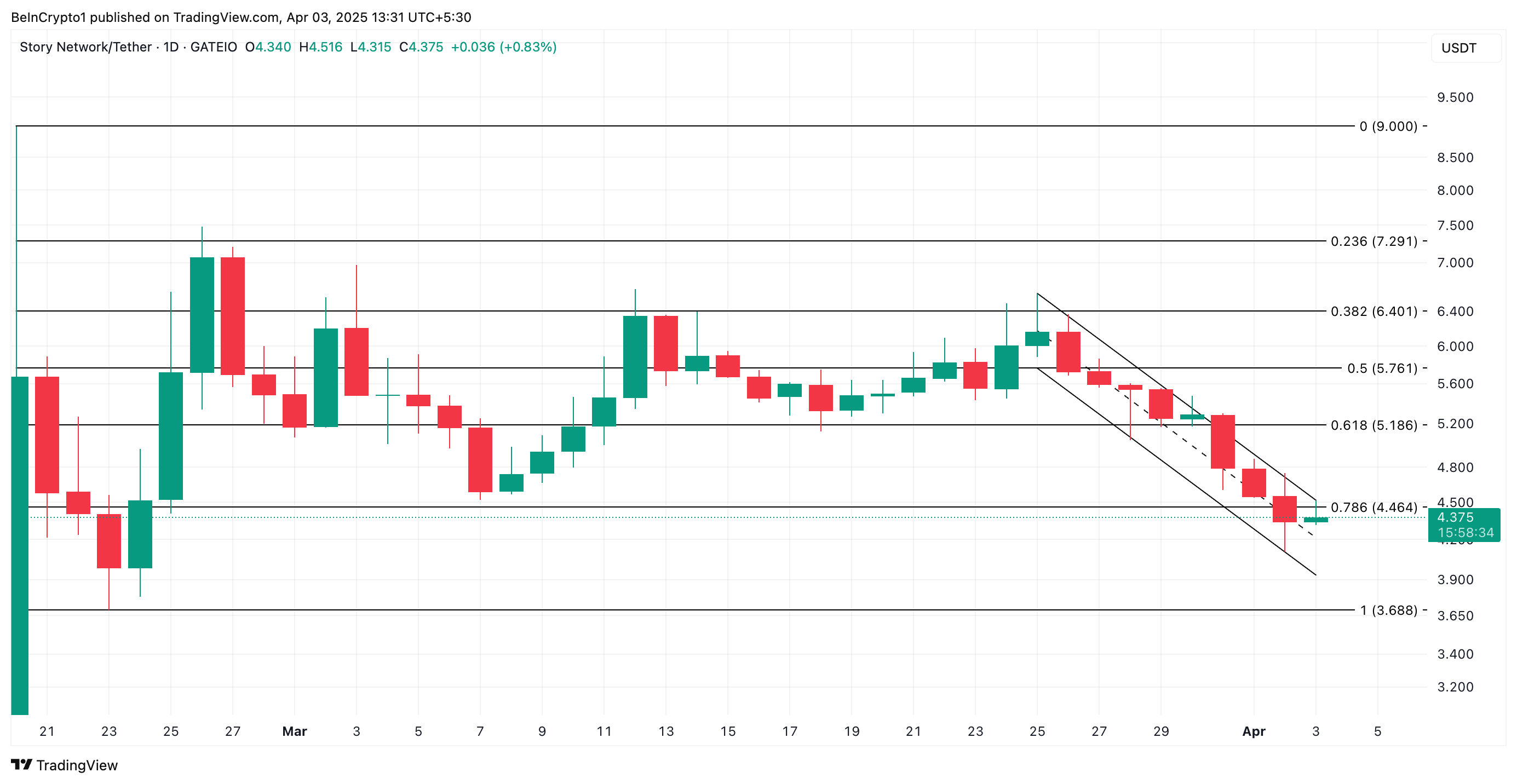
On the other hand, if the altcoin witnesses a spike in new demand, it could break above the bearish channel and rally toward $5.18.
Disclaimer
In line with the Trust Project guidelines, this price analysis article is for informational purposes only and should not be considered financial or investment advice. BeInCrypto is committed to accurate, unbiased reporting, but market conditions are subject to change without notice. Always conduct your own research and consult with a professional before making any financial decisions. Please note that our Terms and Conditions, Privacy Policy, and Disclaimers have been updated.
-
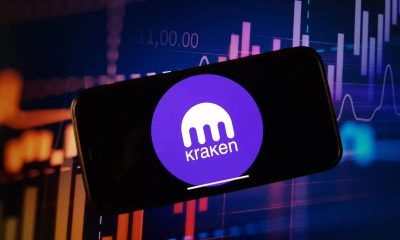
 Regulation23 hours ago
Regulation23 hours agoKraken Obtains Restricted Dealer Registration in Canada
-

 Altcoin19 hours ago
Altcoin19 hours agoHere’s Why This Analyst Believes XRP Price Could Surge 44x
-
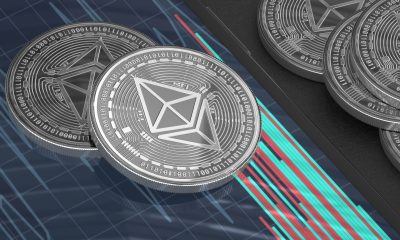
 Ethereum17 hours ago
Ethereum17 hours agoWhy A Massive Drop To $1,400 Could Rock The Underperformer
-

 Altcoin18 hours ago
Altcoin18 hours agoHow Will Elon Musk Leaving DOGE Impact Dogecoin Price?
-
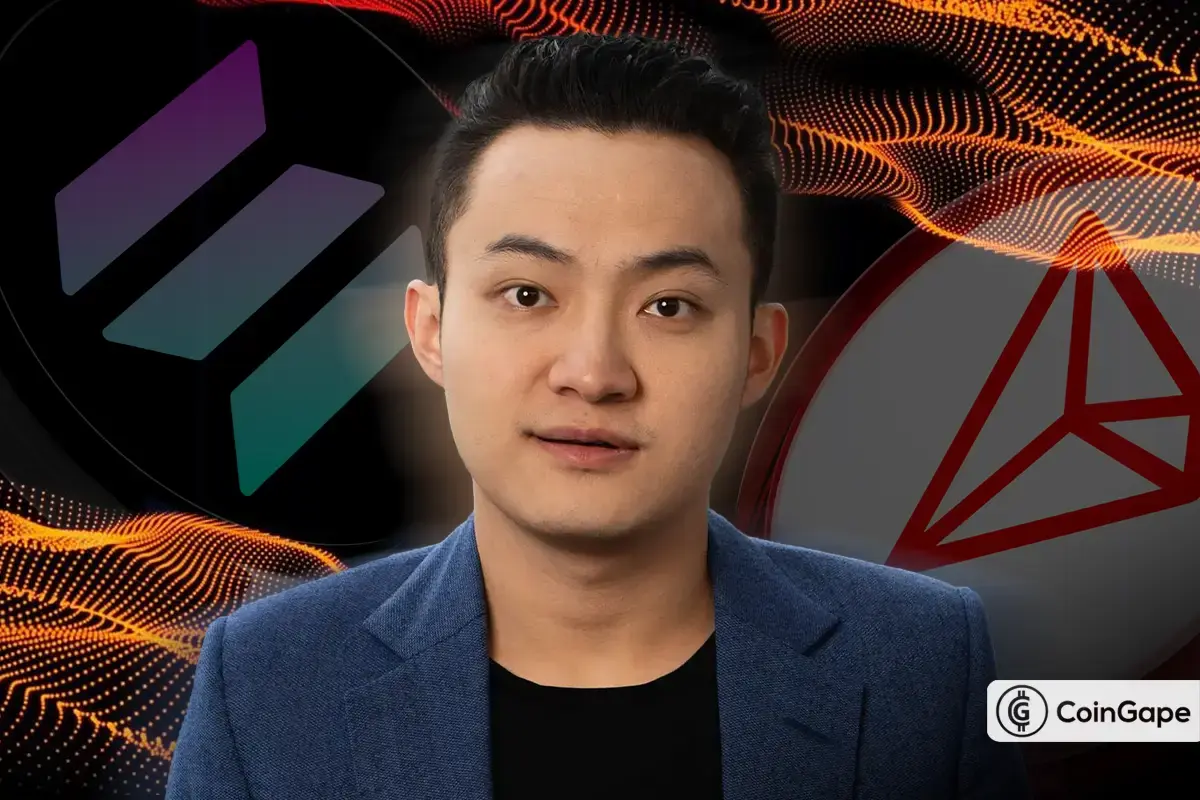
 Altcoin15 hours ago
Altcoin15 hours agoFirst Digital Trust Denies Justin Sun’s Allegations, Claims Full Solvency
-
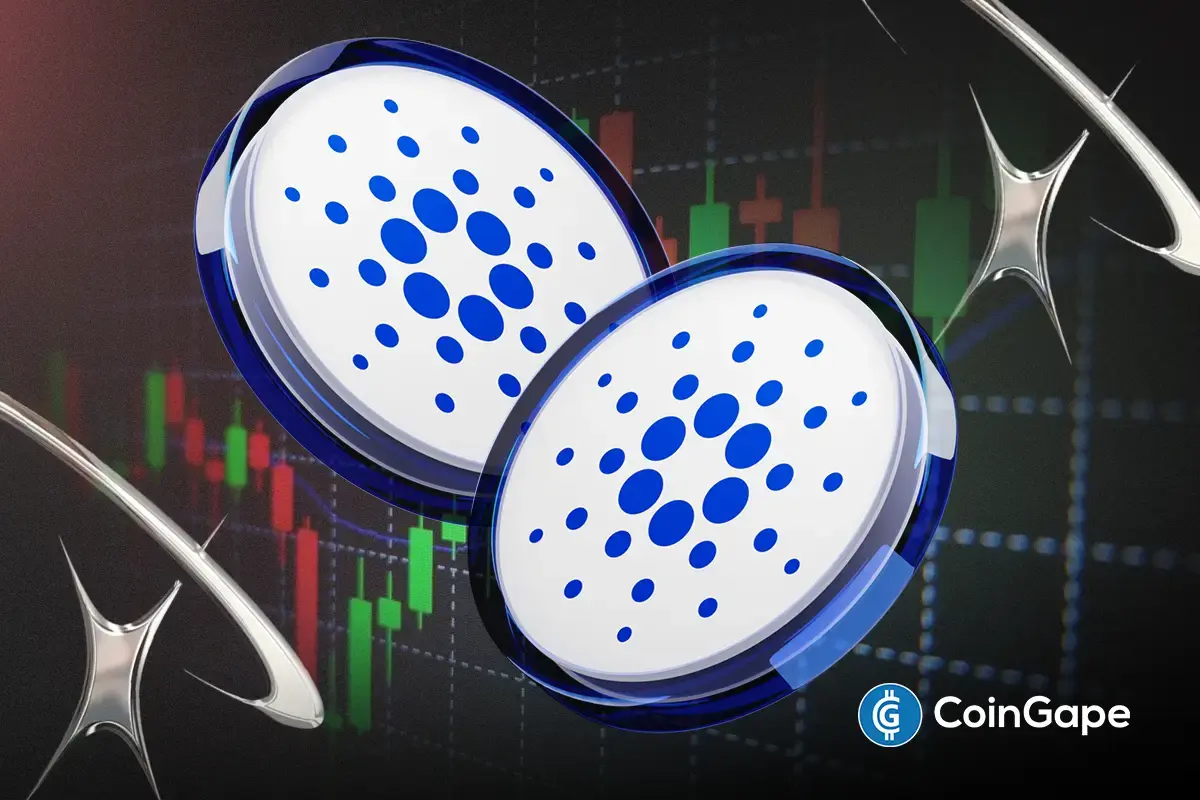
 Altcoin16 hours ago
Altcoin16 hours agoWill Cardano Price Bounce Back to $0.70 or Crash to $0.60?
-

 Ethereum19 hours ago
Ethereum19 hours agoWhales Dump 760,000 Ethereum in Two Weeks — Is More Selling Ahead?
-

 Market8 hours ago
Market8 hours agoXRP Price Under Pressure—New Lows Signal More Trouble Ahead


